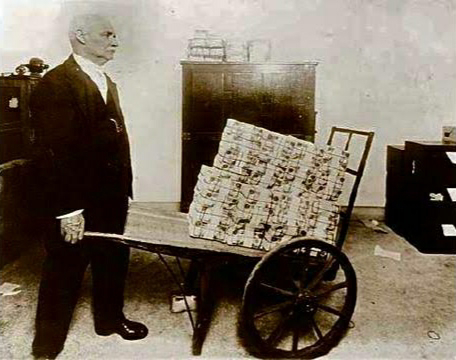Understanding the Repo Rate: An Essential Monetary Policy Tool
Understanding the Repo Rate: An Essential Monetary Policy Tool
Introduction
In the world of finance and central banking, interest rates play a crucial role in influencing economic growth, inflation, and financial stability. The repo rate, short for repurchase rate, is one such key interest rate used by central banks to manage monetary policy. In this article, we will explore what the repo rate is, how it works, and its significance in shaping the economy.
What is the Repo Rate?
The repo rate is the rate at which a central bank, such as the Federal Reserve in the United States or the European Central Bank (ECB) in Europe, lends money to commercial banks against government securities, typically for short periods. In a repurchase agreement (repo), banks borrow money from the central bank by pledging government bonds as collateral. The borrowing is usually done overnight, but it can also be for a few days, depending on the central bank's policy.
How Does the Repo Rate Work?
Let's understand the mechanics of the repo rate with a simplified example:
1. The central bank decides to conduct an open market operation to influence the money supply in the economy.
2. It offers to lend a certain amount of funds to commercial banks through repos.
3. Commercial banks, in need of funds, borrow from the central bank by providing government securities as collateral.
4. The central bank charges interest on these short-term loans, which is the repo rate.
5. At the end of the agreed-upon term, the commercial banks repurchase the government securities from the central bank at a slightly higher price, effectively paying back the loan plus interest.
Significance of the Repo Rate
1. Monetary Policy Tool: Central banks use the repo rate as a monetary policy tool to control the money supply in the economy. By increasing the repo rate, the central bank makes borrowing more expensive for commercial banks, leading to reduced borrowing, less spending, and ultimately, lower inflation.
2. Controlling Inflation: One of the primary objectives of most central banks is to maintain price stability. By adjusting the repo rate, they can influence inflation rates. Higher repo rates discourage borrowing and spending, which helps prevent the economy from overheating and keeps inflation in check.
3. Economic Growth: The repo rate has a direct impact on economic growth. Lowering the repo rate stimulates borrowing, investment, and consumer spending, which can boost economic activity. Conversely, raising the repo rate can slow down economic growth to prevent excessive inflation.
4. Financial Market Stability: The repo rate also affects interest rates in the broader financial market. As the repo rate changes, other interest rates, such as those on loans and mortgages, tend to follow suit. This, in turn, impacts consumer spending, business investment, and overall financial market stability.
Conclusion
The repo rate is a vital tool in the arsenal of central banks to control monetary policy and influence the economy's trajectory. By adjusting this short-term interest rate, central banks can impact borrowing costs, inflation, and overall economic growth. As a result, policymakers carefully consider economic indicators, market conditions, and inflation trends before making decisions regarding the repo rate.
As an individual, understanding the repo rate's implications can provide valuable insights into the broader economic environment, helping you make informed financial decisions.




Comments
Post a Comment